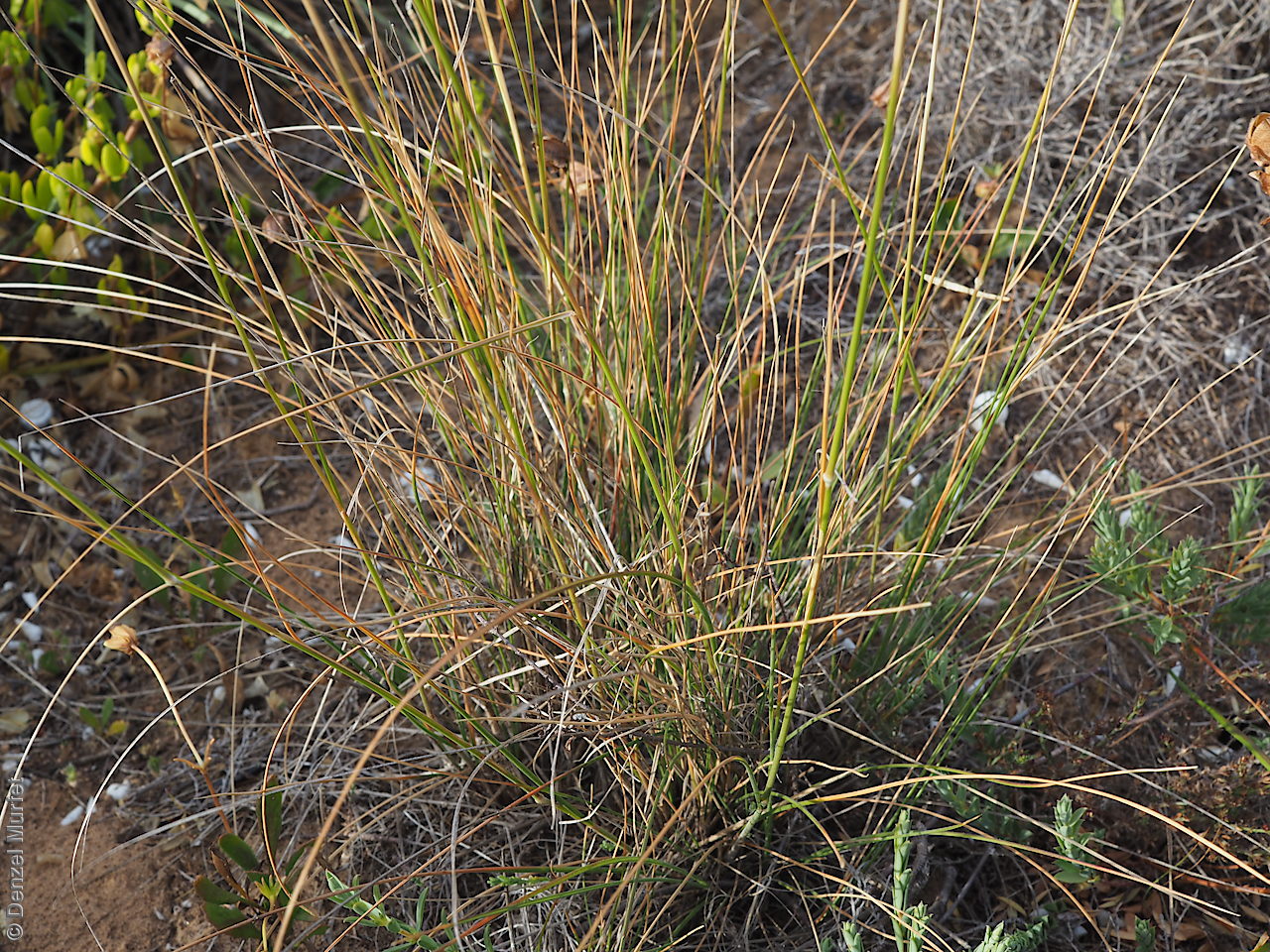
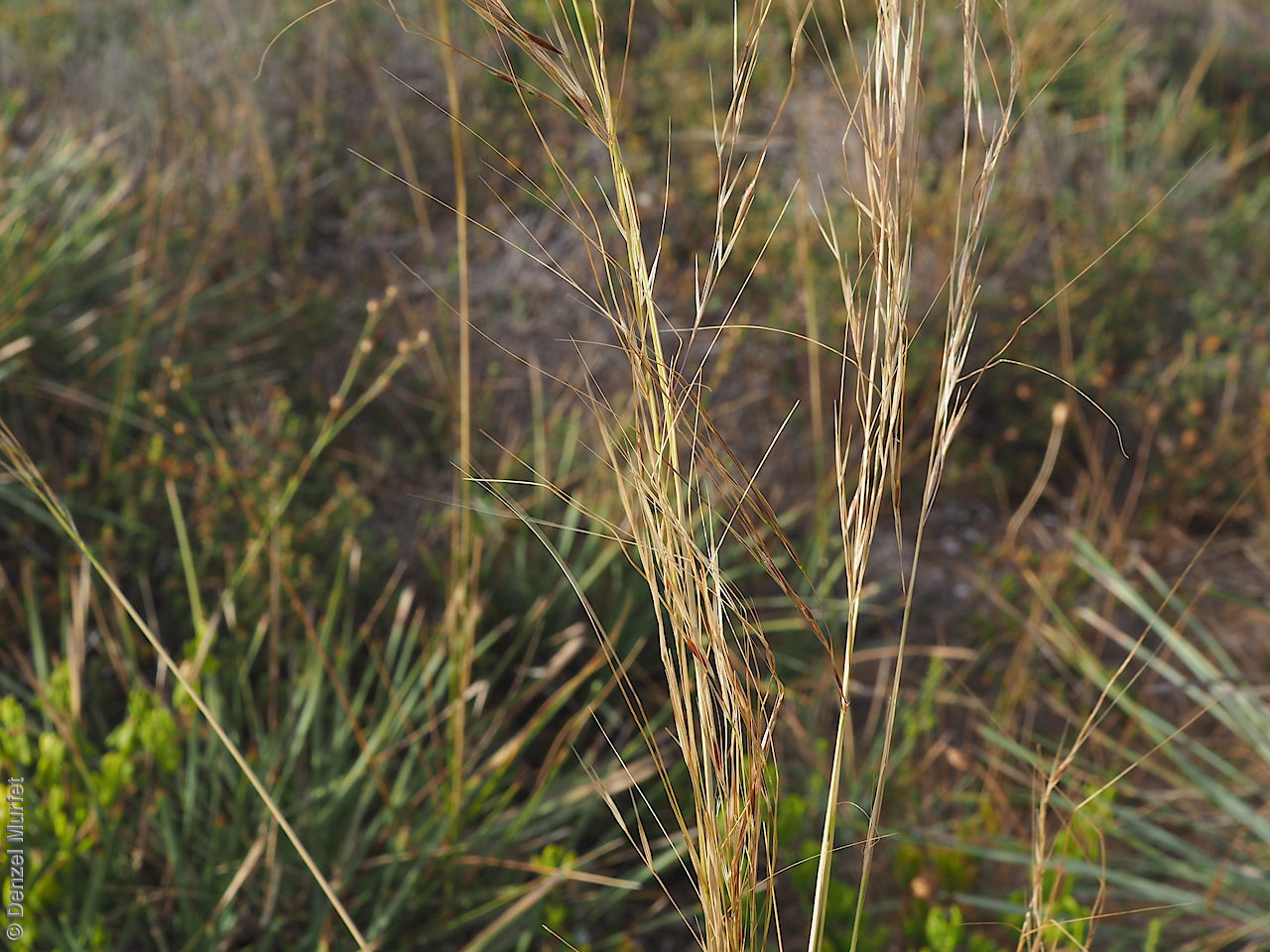
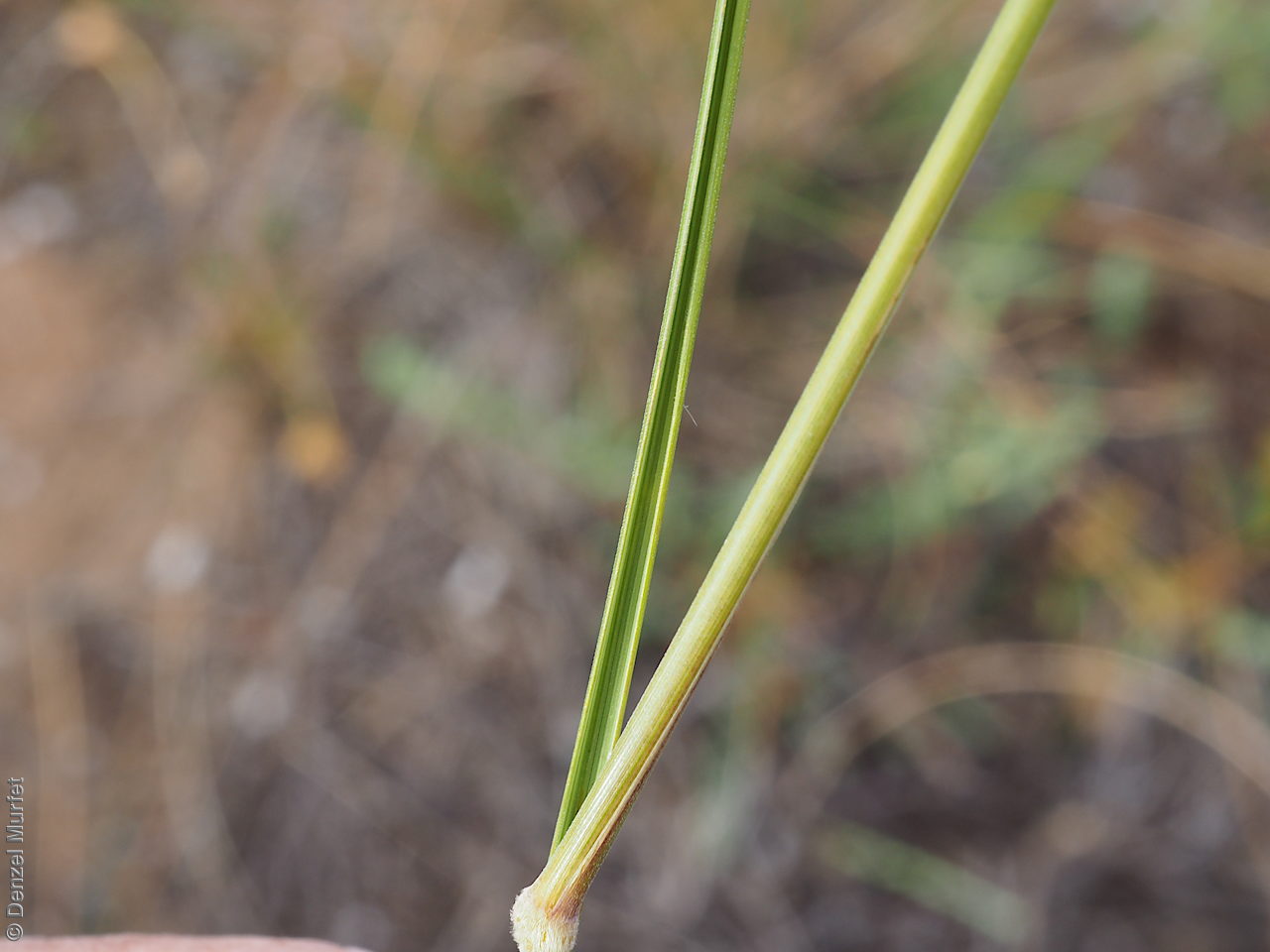
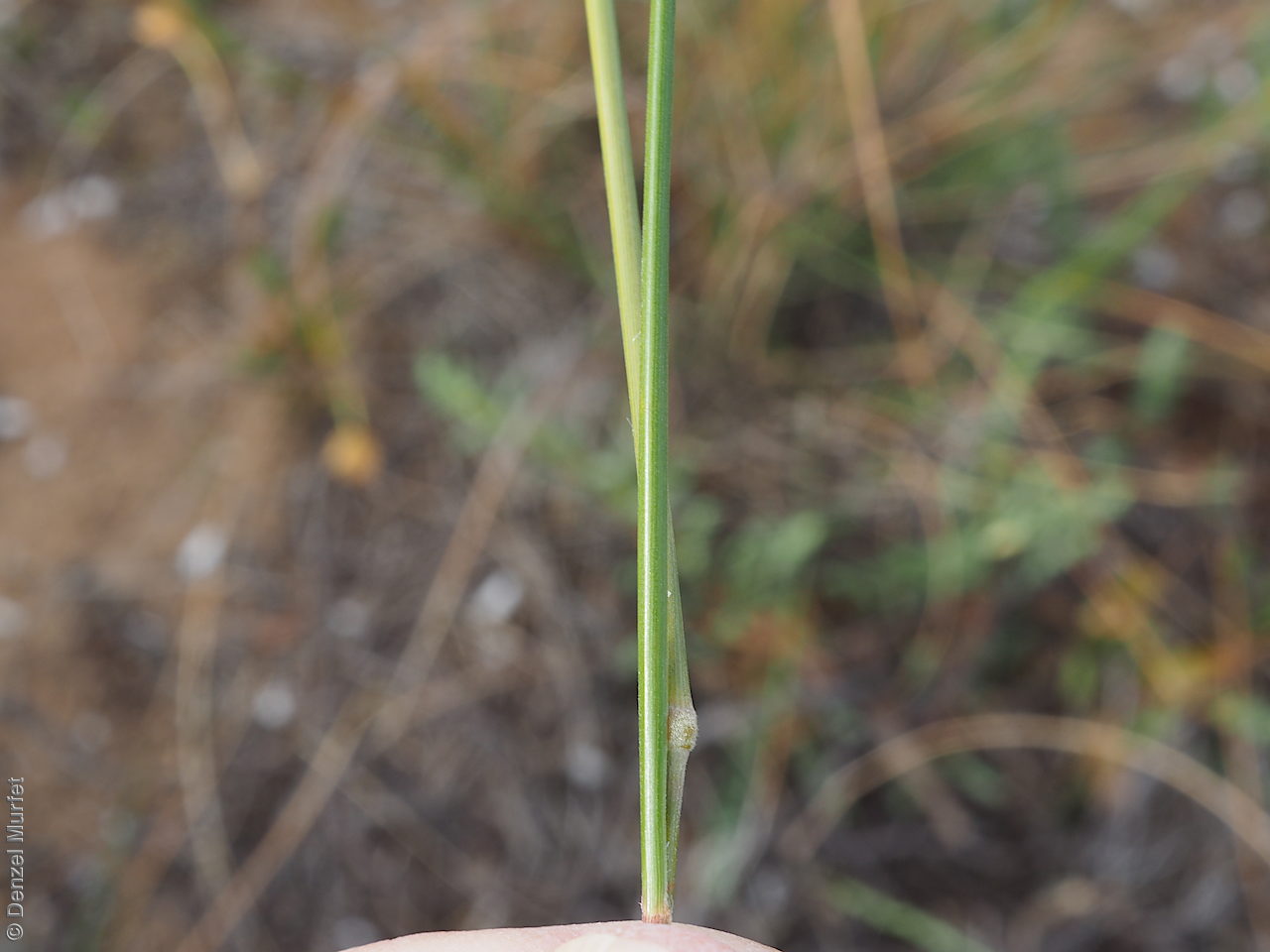


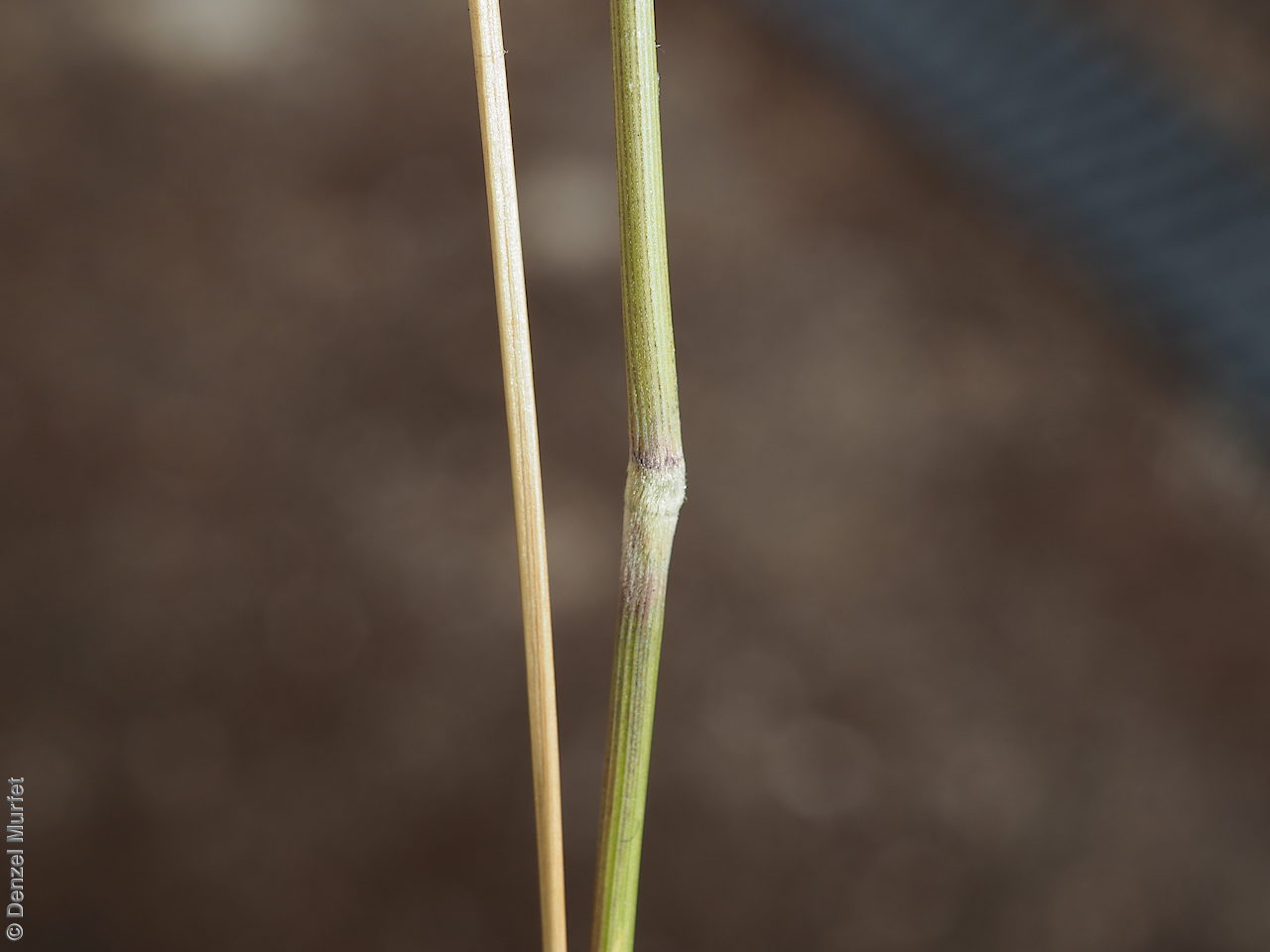
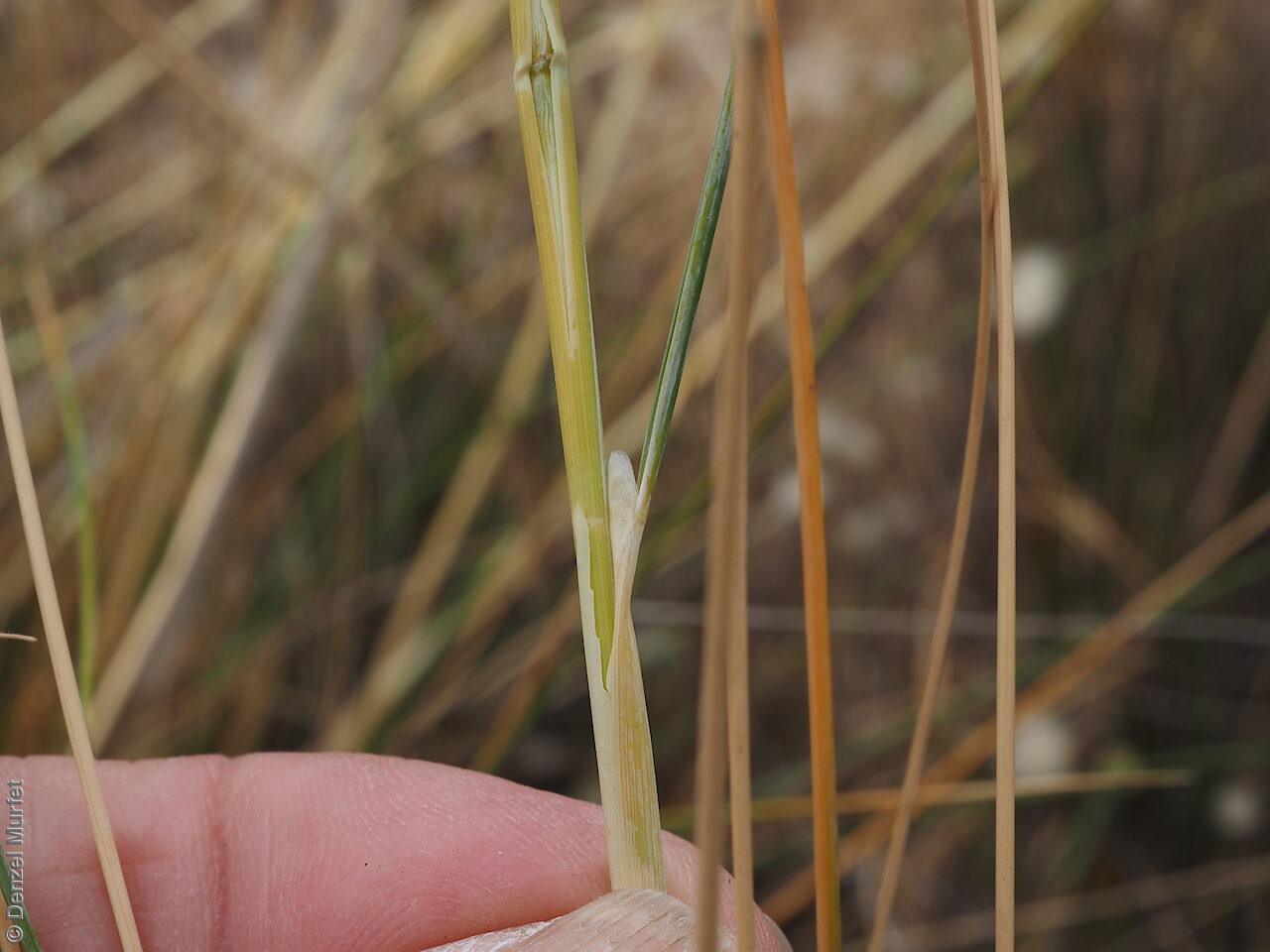


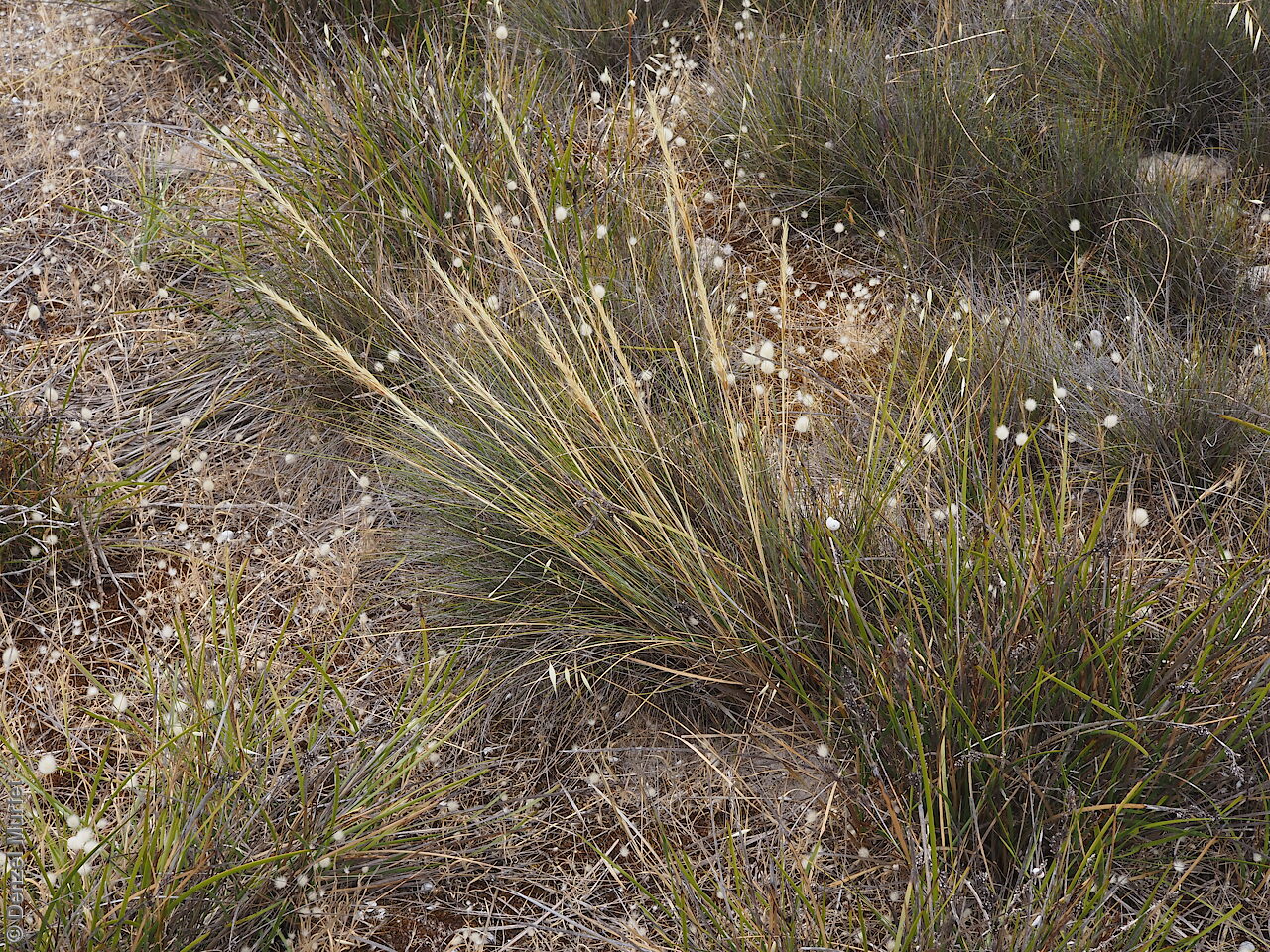
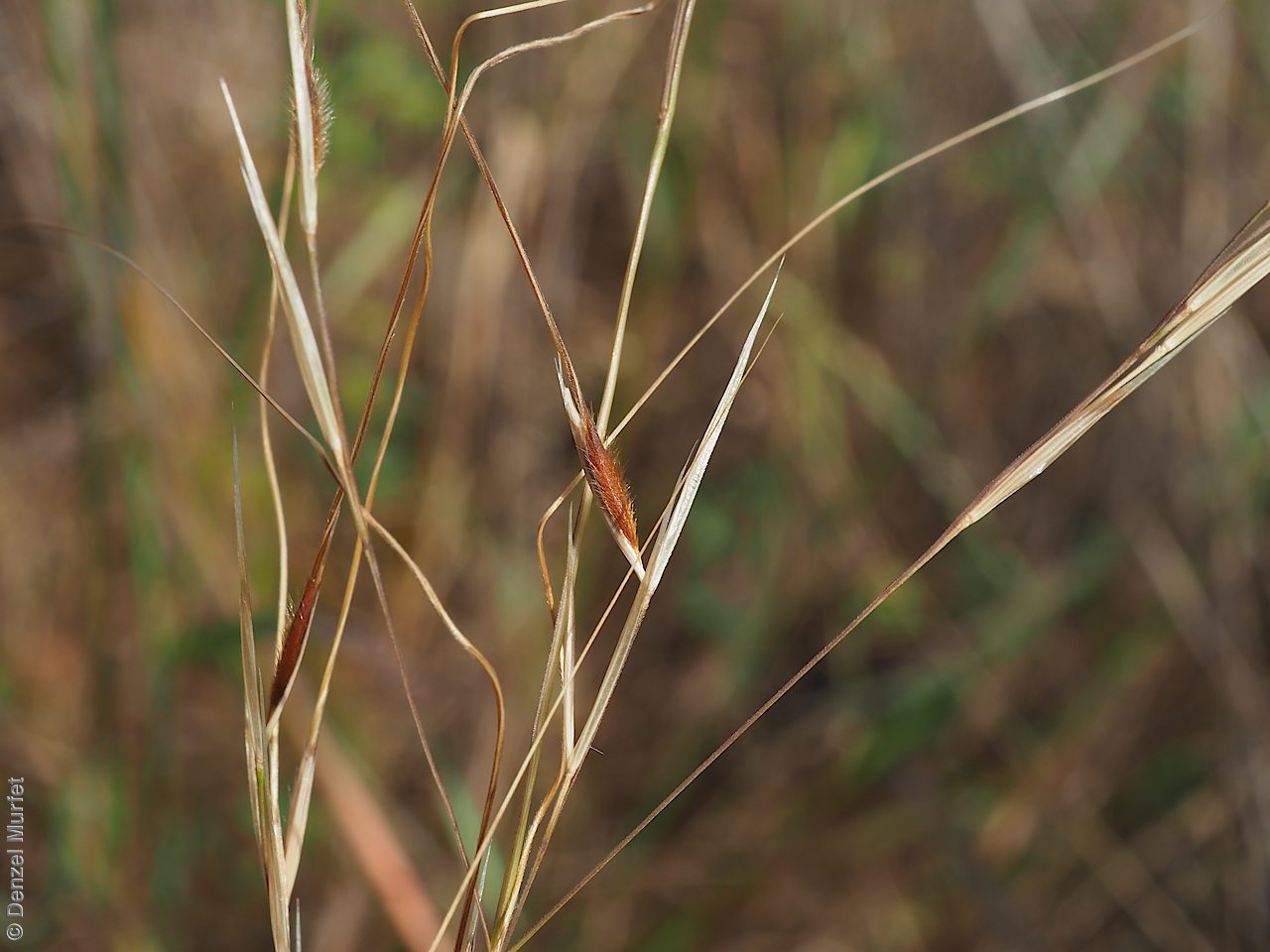
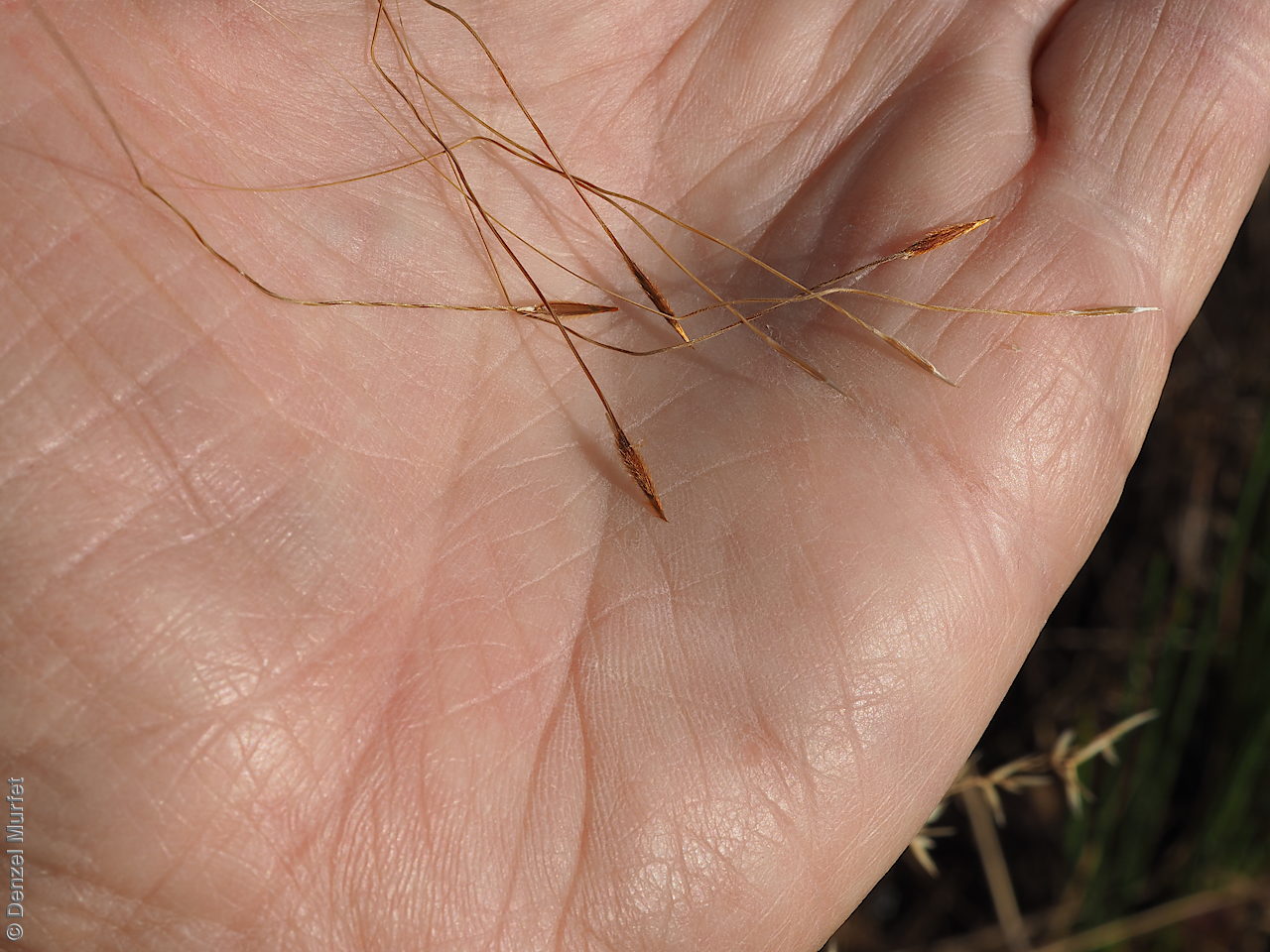
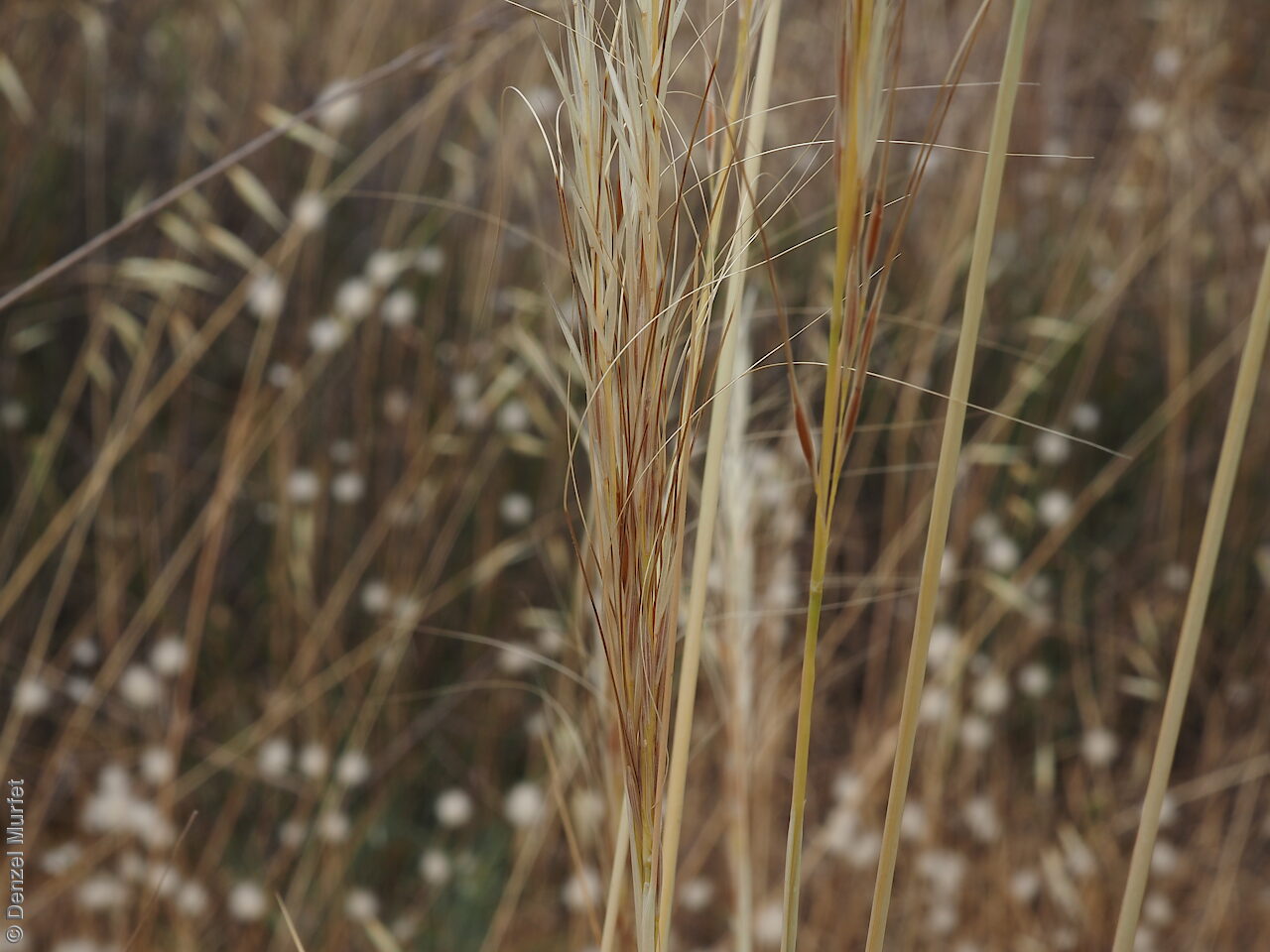



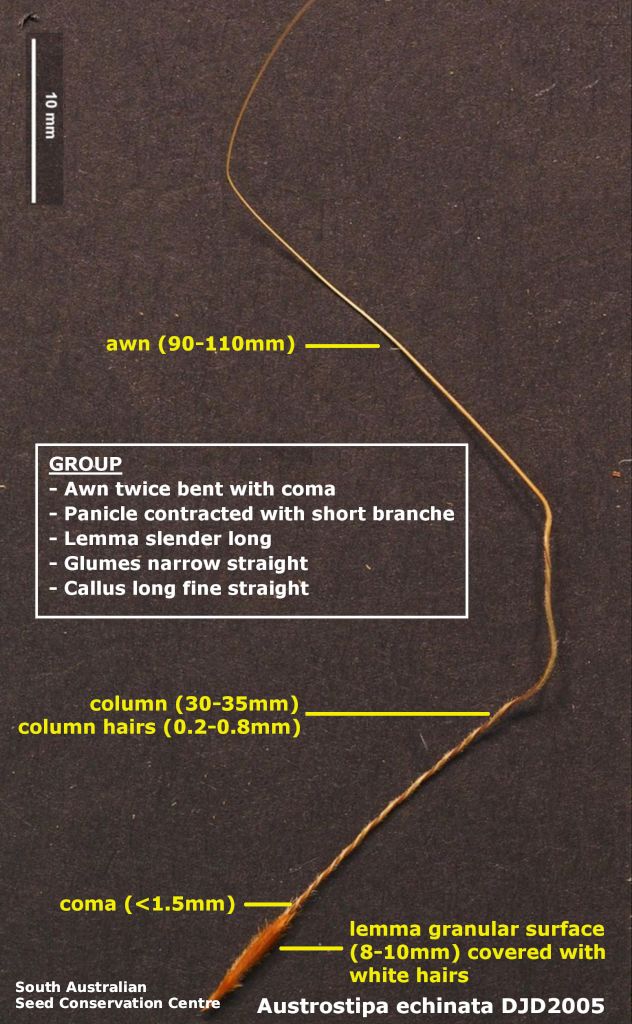



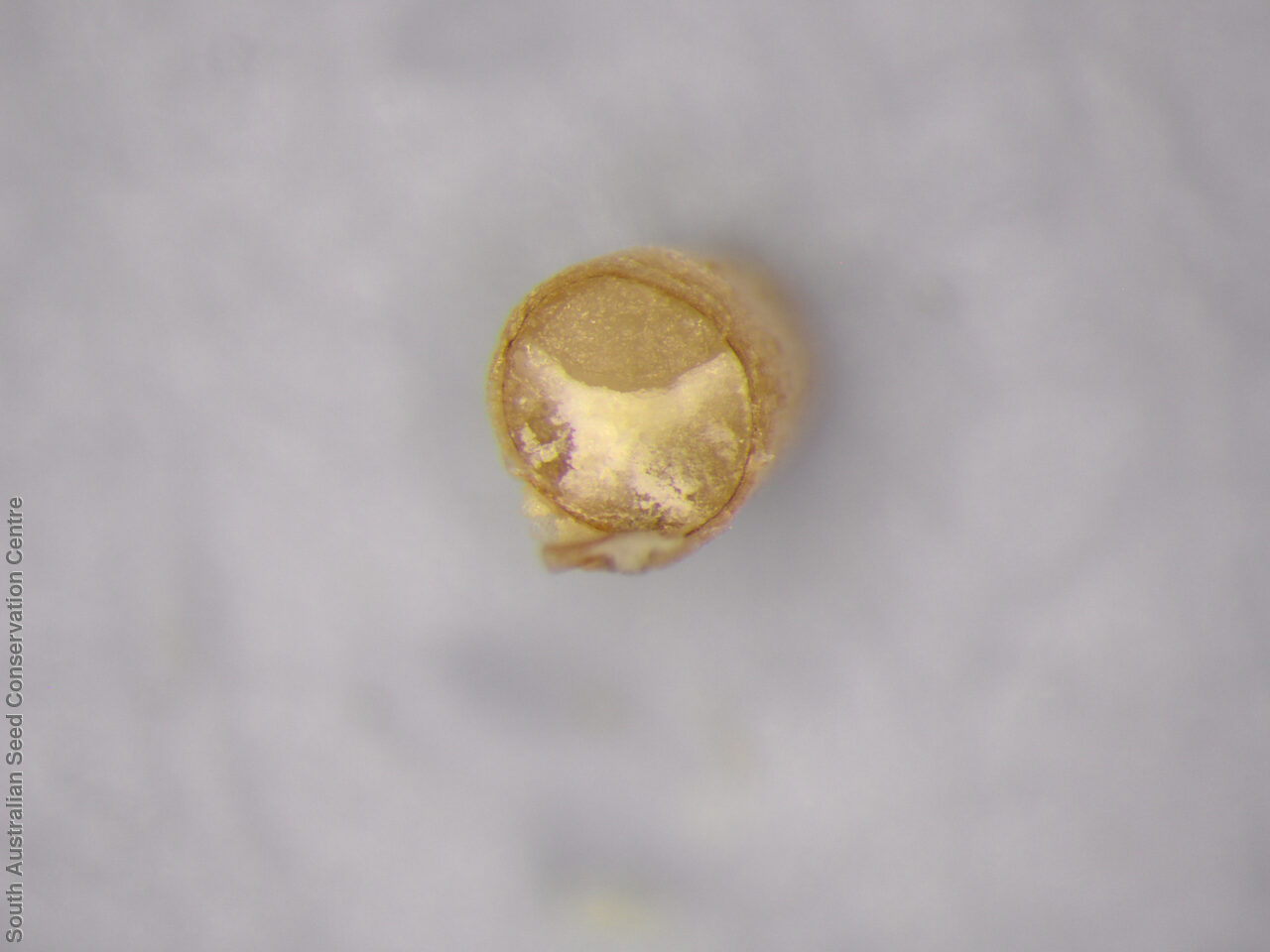


Botanical art
Prior names
Stipa echinata
Etymology
Austrostipa from the Latin 'auster' meaning south and the genus Stipa, referring to the genus being allied to Stipa but restricted to Australia. Echinata from the Latin 'echinos' meaning spiny 'like a hedgehog'; alluding to its spiny yipped leaves.
Distribution and status
Endemic to South Australia and found on the Eyre Peninsula, southern York Peninsula, southern Mount Lofty Ranges, Murrayland and the upper South-east in South Australia growing on sand with limestone, in mallee and open scrub. Native. Rare in South Australia.
Herbarium regions: Eyre Peninsula, Murray, Yorke Peninsula, Southern Lofty, South Eastern
NRM regions: Adelaide and Mount Lofty Ranges, Northern and Yorke, South Australian Murray-Darling Basin, South East
AVH map: SA distribution map (external link)
Plant description
Tufted perennial grass to 0.8 m high with culms unbranched and having nodes with silky hairs. Leaves rigid, erect with a pungent tip; glabrous below and hairy above; inrolled, to 4 cm long and 1.5 mm wide. Inflorescence a contracted open panicle to 45 cm long, with glabrous glumes. Flowering between October and November.
Key to this species: awn twice bent with coma; panicle contracted with short open branches; glumes narrow straight; callus long fine straight; short-hooked callus; lemma slender long with a granular surface and covered in dense hairs; coma with hairs 0.6-1.5 mm long. Fruits are reddish-brown narrow-ellipsoid lemma to 10 mm long, with a granular surface and covered in dense white or golden hairs; coma to 1.5 mm long; callus long straight to 3.3 mm long; awn twice bent to 110 mm long with column pubescent with hairs to 0.8 mm long. Seeds are yellow-brown narrow-ellipsoid grain to 3.5 mm long within the lemma. Seed embryo type is lateral.
Seed collection and propagation
Collect seeds between November and January. Use your hands to gently strip the seeds (lemma) off the mature fruiting spike, those that are turning golden brown. Mature seeds will come off easily compare to the immature seeds that remain on the spike. Alternatively, you can break off the whole fruit spike to allow some of the seeds to mature further. Place the seeds/spike in a tray and leave to dry for two weeks. No further cleaning is required if only seed collected. If seed spikes collected, use hand to strip off the mature seeds. Store the seeds with a desiccant such as dried silica beads or dry rice, in an air tight container in a cool and dry place. Viability of grass seeds could be very viable, depending on time of seed collections and seasonal conditions.
| Location | No. of seeds (weight grams) | Number of plants | Date collected | Collection number Collection location | Date stored | % Viability | Storage temperature |
|---|---|---|---|---|---|---|---|
| BGA MSB | 5,800 (29.35 g) 5,800 (29.12 g) | 200+ | 26-Nov-2010 | DJD2005 Southern Lofty | 1-Jan-2012 | 100% | +5°C, -18°C |
Number of plants: This is the number of plants from which the seeds were collected.
Collection location: The Herbarium of South Australia's region name.
% Viability: Percentage of filled healthy seeds determined by a cut test or x-ray.